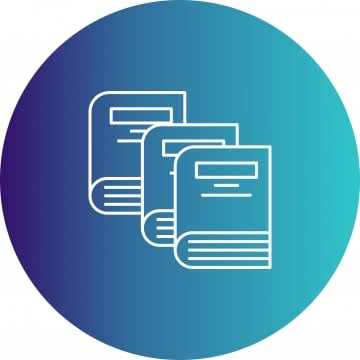Managing the Risks of Content Management Systems Adoption (Filenet): A Guide to Risk Analysis and Mitigation
Abstract
Content management systems (CMS) have become a vital technology for organizations to create, manage, and publish digital content through intuitive web interfaces. However, adopting CMS also introduces considerable technological and organizational risks stemming from the integration and workflow changes needed to leverage these platforms. Without identifying and mitigating these risks, CMS initiatives frequently run into major issues around security, costs, user adoption, fragmented workflows, and an overall lack of value realization.
This paper provides a comprehensive survey of the most common risks arising during CMS implementation and proven mitigation strategies. The analysis examines risk areas across security, integration complexity, budget overruns, process disruption, inconsistent governance, and user resistance. For each area, prevalent risks are outlined along with industry best practices, frameworks, and guidelines to avoid or minimize potential pitfalls.
A structured risk analysis approach is presented, covering how organizations can proactively identify, evaluate, and treat risks throughout the CMS implementation lifecycle. Once risks are visible, mitigation actions can be prioritized and tailored to the organization's needs. Ongoing risk assessment is essential even after launch as new issues emerge.
Overarching best practices for managing CMS risks are highlighted based on industry evidence and risk management methodologies. These include establishing clear and realistic requirements, following secure software development lifecycles for customizations, phasing rollouts to simplify integration, budgeting for total cost of ownership, allowing time for user adoption, instituting adaptable governance, maintaining training reinforcement, and continuously monitoring and communicating risks.
With holistic risk analysis combined with structured change management, organizations can more confidently embark on CMS initiatives. Potential pitfalls are uncovered early and mitigated through cross-functional collaboration and oversight. Rather than being derailed by foreseeable risks, organizations can tap the full potential of CMS to improve content workflows, automation, and digital capabilities while avoiding major disruptions across people, processes, and technologies. The survey highlights how multifaceted risk management practices enable successful CMS implementation that realizes measurable benefits and impact.
References
Hodgson, P. (2018). Risks and Mitigation Strategies for Enterprise Content Management System Implementations. Journal of Information Science Theory and Practice, 6(2), 6-18.
Lankes, R. D. (2016). Expect More: Demanding Better Libraries for Today's Complex World. R. David Lankes.
Hiatt, J. M., & Creasey, T. J. (2012). Change management: The people side of change. Prosci.
Mohan, V., & Vaish, A. (2015). Network forensic framework for investigation of content management systems. Journal of Information Security and Applications, 20, 112-127.
Kunduru, A. R. (2023). Cloud Appian BPM (Business Process Management) Usage In health care Industry. IJARCCE International Journal of Advanced Research in Computer and Communication Engineering, 12(6), 339-343. https://doi.org/10.17148/IJARCCE.2023.12658
Jang-Jaccard, J., & Nepal, S. (2014). A survey of emerging threats in cybersecurity. Journal of Computer and System Sciences, 80(5), 973-993.
Kunduru, A. R. (2023). Artificial intelligence usage in cloud application performance improvement. Central Asian Journal of Mathematical Theory and Computer Sciences, 4(8), 42-47. https://cajmtcs.centralasianstudies.org/index.php/CAJMTCS/article/view/491
Kunduru, A. R. (2023). Artificial intelligence advantages in cloud Fintech application security. Central Asian Journal of Mathematical Theory and Computer Sciences, 4(8), 48-53. https://cajmtcs.centralasianstudies.org/index.php/CAJMTCS/article/view/492
Kunduru, A. R. (2023). Cloud BPM Application (Appian) Robotic Process Automation Capabilities. Asian Journal of Research in Computer Science, 16(3), 267–280. https://doi.org/10.9734/ajrcos/2023/v16i3361
Yu, B. (2016). Enterprise content management systems in engineering organizations: A user satisfaction analysis. Applied Mechanics and Materials, 846, 282-286.
Robertson, J. (2018). How to Calculate and Cut the Total Cost of Ownership and Hidden Costs of Enterprise Software. The Information and Technology Services center at the Transport for NSW.
Ellis, T. J., & Van Belle, J. P. (2009). Open Source Content Management Systems: An Argumentative Approach to Deciding Whether They Should Be Used. 2009 Annual Research Conference of the South African Institute of Computer Scientists and Information Technologists, 312-320.
Nah, F. F. H., & Nam, C. S. (2012). Critical Success Factors of Enterprise Resource Planning and Customer Relationship Management Systems. Journal of Enterprise Information Systems, 26(4), 392-413.
Kunduru, A. R. (2023). Machine Learning in Drug Discovery: A Comprehensive Analysis of Applications, Challenges, and Future Directions. International Journal on Orange Technologies, 5(8), 29-37. Retrieved from https://journals.researchparks.org/index.php/IJOT/article/view/4725.
Mohan, V., & Vaish, A. (2015). Network forensic framework for investigation of content management systems. Journal of Information Security and Applications, 20, 112-127.
Arjun Reddy Kunduru. (2023). From Data Entry to Intelligence: Artificial Intelligence’s Impact on Financial System Workflows. International Journal on Orange Technologies, 5(8), 38-45. Retrieved from https://journals.researchparks.org/index.php/IJOT/article/view/4727.
Arjun Reddy Kunduru. (2023). The Inevitability of Cloud-Based Case Management for Regulated Enterprises. International Journal of Discoveries and Innovations in Applied Sciences, 3(8), 13–18. Retrieved from https://openaccessjournals.eu/index.php/ijdias/article/view/2247.
Kunduru, A. R. (2023). DATA CONVERSION STRATEGIES FOR ERP IMPLEMENTATION PROJECTS. CENTRAL ASIAN JOURNAL OF MATHEMATICAL THEORY AND COMPUTER SCIENCES, 4(9), 1-6. Retrieved from https://cajmtcs.centralasianstudies.org/index.php/CAJMTCS/article/view/509.
Arjun Reddy Kunduru. (2023). Healthcare ERP Project Success: It’s all About Avoiding Missteps. Central Asian Journal of Theoretical and Applied Science, 4(8), 130-134. Retrieved from https://cajotas.centralasianstudies.org/index.php/CAJOTAS/article/view/1268.
Chow, M., Herold, D. K., Choo, T. M., & Chan, K. (2014). Extending the technology acceptance model to explore the intention to use Second Life for enhancing healthcare education. Computers & Education, 72, 110-119.






.png)
